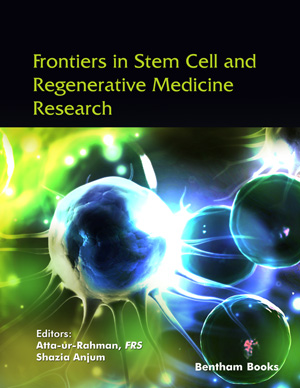Abstract
Acute radiation syndrome (ARS) is also known as triple syndrome, which develops after whole-body radiation exposure. During unforeseen exposures, these syndromes are set in depending on the dose of radiation. Cell-based therapy, especially using stem cells and their soluble factors, is gaining wide attention in the field of regenerative medicine to treat various diseases, including degenerative diseases. Stem cells attract prime attention because of their profound inherent tissue repair capability and regeneration potential. Further, stem cell therapy can be one of the promising strategies for the amelioration of ARS because of its ability to lodge in damaged tissue and release regenerative cytokines by sensing the local injury. In this regard, human Wharton's jelly-derived mesenchymal stem cells (hWJ-MSCs) have gained substantial attention for their applications in the treatment of various human diseases due to several advantages offered by them. This article is intended to provide future perspective on the use of WJ-MSCs for the management of accidental radiation injury in pre-clinical models, and finally, their utility in regeneration of damaged tissues and organs.
[http://dx.doi.org/10.1007/s12015-010-9166-x] [PMID: 20602182]
[http://dx.doi.org/10.1007/s00418-008-0519-3] [PMID: 18836737]
[http://dx.doi.org/10.1634/stemcells.2007-0439] [PMID: 18065397]
[http://dx.doi.org/10.1007/s12015-012-9418-z] [PMID: 23233233]
[http://dx.doi.org/10.1371/journal.pone.0009016] [PMID: 20126406]
[http://dx.doi.org/10.1634/stemcells.2007-1028] [PMID: 18703664]
[http://dx.doi.org/10.1016/j.stem.2010.09.009] [PMID: 20887949]
[http://dx.doi.org/10.1016/j.jcyt.2017.08.004] [PMID: 28964742]
[http://dx.doi.org/10.3109/14653240903548194] [PMID: 20345214]
[http://dx.doi.org/10.1186/1471-2407-10-590] [PMID: 21029413]
[http://dx.doi.org/10.1016/j.canlet.2009.02.011] [PMID: 19285791]
[http://dx.doi.org/10.1016/j.lungcan.2010.01.003] [PMID: 20138387]
[http://dx.doi.org/10.1093/jrr/rrt062] [PMID: 23792493]
[http://dx.doi.org/10.1111/ajt.15819] [PMID: 32040239]
[http://dx.doi.org/10.4252/wjsc.v14.i5.347] [PMID: 35722198]
[http://dx.doi.org/10.1002/anie.201908712] [PMID: 31418982]
[http://dx.doi.org/10.1155/2019/2457082] [PMID: 30867667]
[PMID: 32161012]
[http://dx.doi.org/10.1093/jrr/rry048] [PMID: 30010837]











